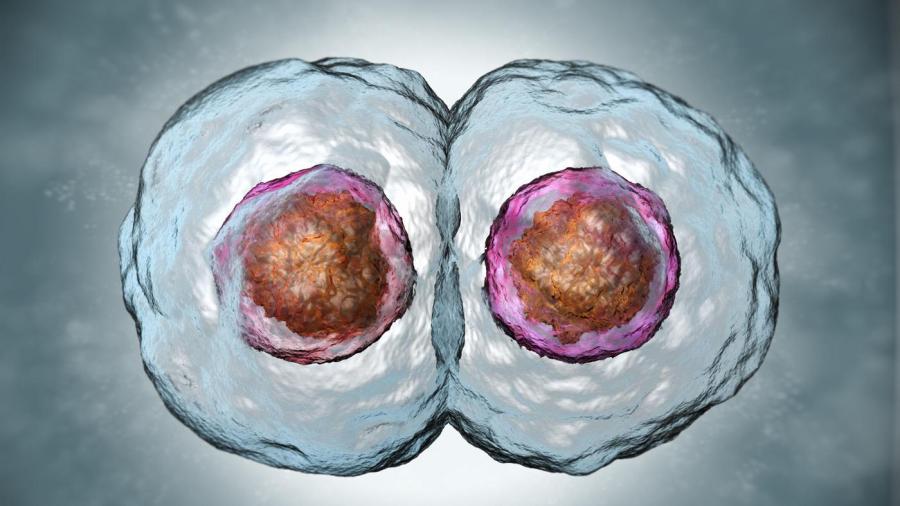How Do Daughter Cells Compare to Parent Cells?

Daughter cells have roughly the same number of chromosomes as parent cells. They can be produced through either the process of mitosis or meiosis.
Regardless of whether they are produced through meiosis or mitosis, daughter cells share some commonalities with the parent cells. However, they also have some genetically distinct characteristics. Daughter cells also exhibit differences due to the fact that they have new deoxyribonucleic acid, or DNA, which is a set of genetic instructions that influences an organism’s growth and development at birth. Cell division is the process that creates daughter cells. It influences how cells replicate and reproduce themselves, along with the manner in which they generate offspring. The differences between daughter cells, and with the parent cells, lies in the manner in which the cells divide.
Mitosis
One type of cell division that forms daughter cells is mitosis. In this process, cells undergo only one division to create daughter cells. The result yields two daughter cells that are classified as diploids, which means that they have the same number of chromosomes as the parent cells. Daughter cells produced through mitosis are genetically identical. This type of reproduction takes place in all organisms except for viruses. During mitosis, the protophase period is considerably shorter than it is in meiosis. No recombination or crossing over of genes takes place during mitosis. This reproduction contains just one phase each of metaphase and anaphase. During metaphase, individual chromosomes form a line along an equator. In anaphase, the sister chromatids divide along opposite poles.
Meiosis
Another possible type of cell division is meiosis. While mitosis involves only one cell division, meiosis requires two. In the end, meiosis creates four daughter cells, while meiosis produces only two. While daughter cells produced during mitosis are genetically identical, those produced during meiosis are different. Unlike mitosis, meiosis takes place in a much narrower range of organisms. It is found only in plants, animals and fungi. Another key difference between meiosis and mitosis is that while meiosis produces all cells except for eggs and sperm, meiosis exclusively produces egg and sperm cells. The prophase stage of mitosis cell division is much longer. This process also has two phases of anaphase, whereas meiosis only has one. In meiosis prophase, recombination of chromosomes takes place. In meiosis metaphase, like mitosis metaphase, the chromosomes line up along an equator. In contrast to mitosis, the sister chromatids gravitate toward the same pole in meiosis. They eventually separate into separate poles, but this does not happen until the second part of Anaphase.
Despite reproducing in separate ways, daughter cells share some commonalities. They are all reproduced from diploid parent cells and produced through sexual reproduction as opposed to asexual reproduction, which only involves one parent. Sexual reproduction also reproduces genetically distinct daughter and parent cells, while asexual reproduction creates daughter cells that are genetically identical to their parents. Regardless of reproduction method, daughter cells go through interphase, prophase, metaphase, anaphase and telophase. They line up along an equator during metaphase and divide along opposite equators during anaphase. Both types of daughter cell reproduction end with cytokinesis.





